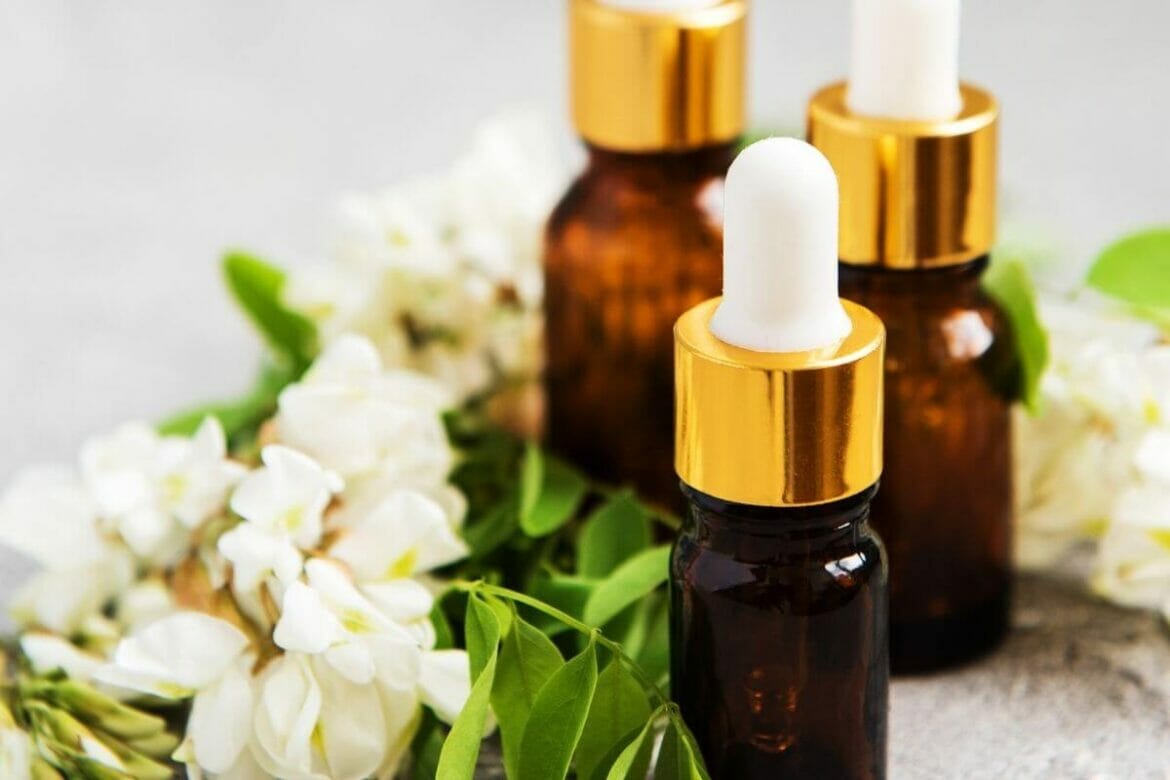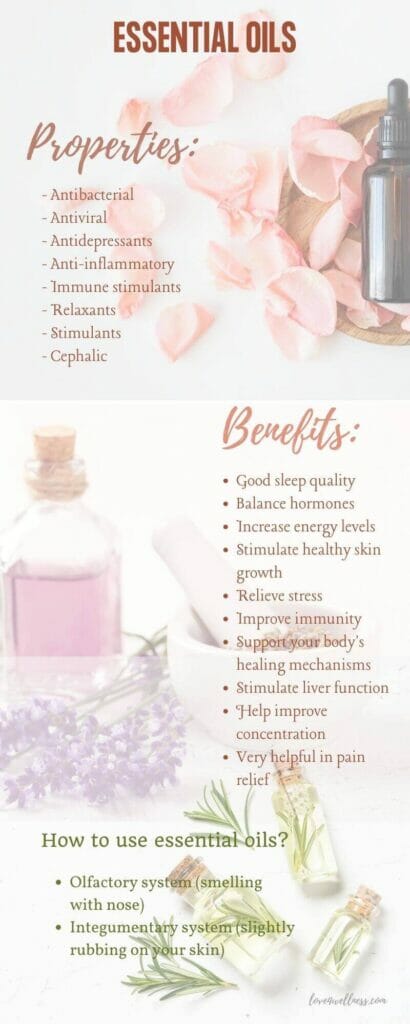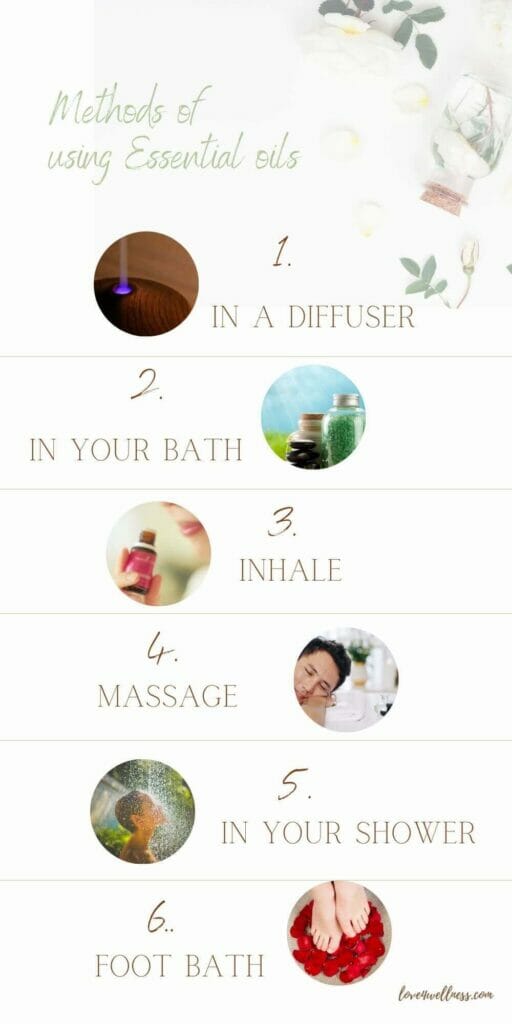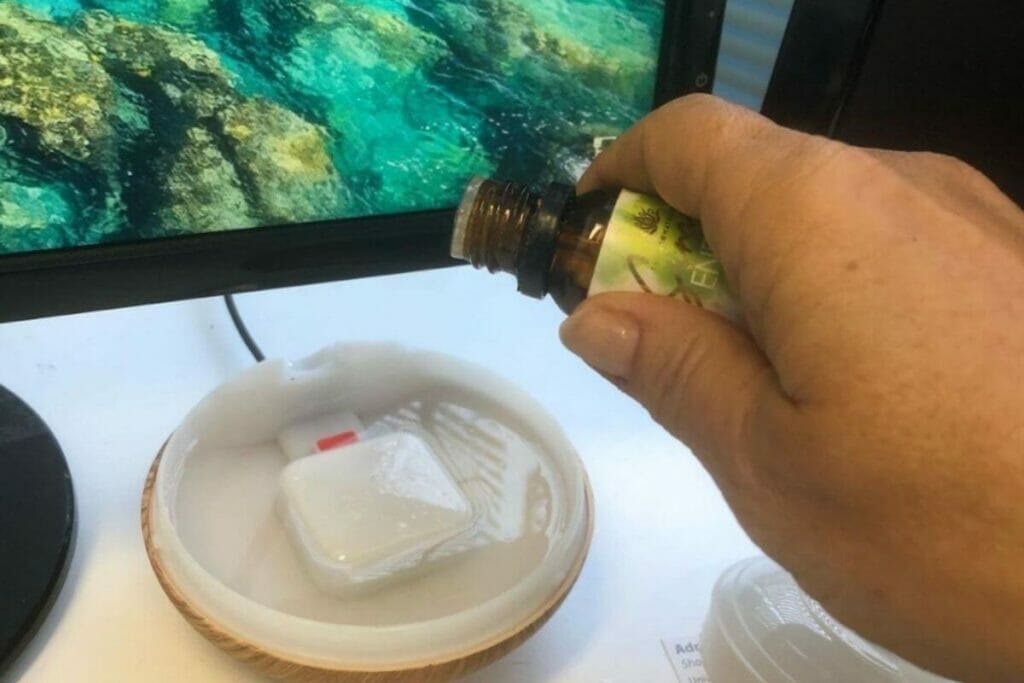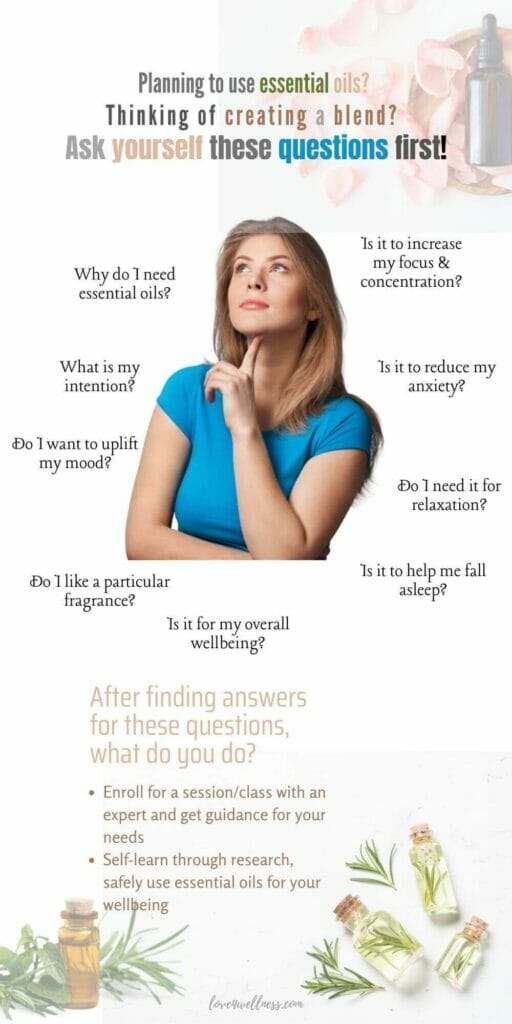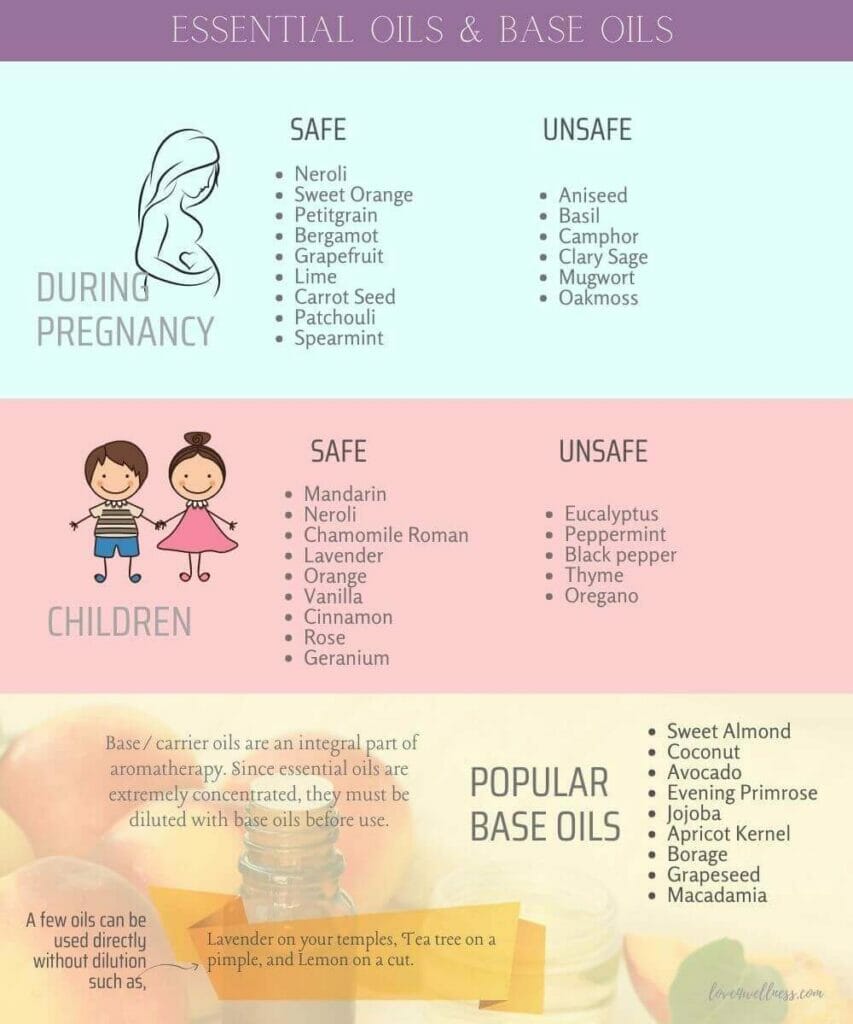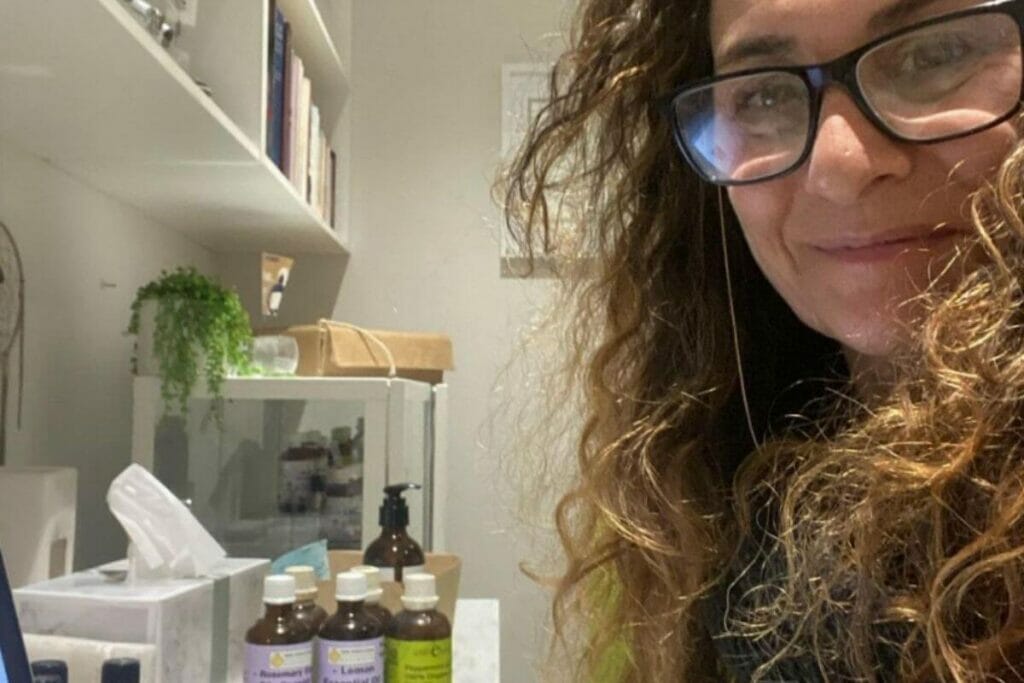GUIDE TO AROMATHERAPY – TABLE OF CONTENTS
- What is Aromatherapy?
- What are Essential Oils?
- Properties of Essential Oils
- Benefits of Essential Oils
- What are Base Oils/Carrier Oils?
- How concentrated an essential oil can be? An example
- How does your body absorb essential oils?
- Things to remember to avoid adverse reactions
- Different methods of Aromatherapy
- Which method is the best to use?
- Internal ingestion of essential oils – how safe is the practice?
- As a beginner, how do I start with using essential oils?
- Are there any contraindications?
- Are most essential oils supposed to be diluted?
- Do essential oils help with mental health?
- Are essential oils for everyone?
- Specifically, are they safe for kids?
- Are they safe for pregnant women?
- Some awesome helpful essential oil recipes
[convertful id=”139873″]
Aromatherapy – the name itself seems a luxury. Seemingly enough, the therapy offers plenty of benefits and makes you feel wellness physically, mentally, and emotionally. Yet, many of us have several doubts about the therapy’s power.
Some very basic such as what are essential oils, and some quite specific such as which method to use to increase concentration. Not to worry, Simmi, an aromatherapist with a rich experience of 25 years, has got you covered. She explains everything about Aromatherapy so beautifully that you will want to indulge in Aromatherapy often!
You are in for a ride. Hop on!
What is Aromatherapy?
Aromatherapy is both art + science using aromatic volatile plant extracts that affect both the mind and body, helping to facilitate physical, emotional and mental wellbeing.
When applied correctly and safely, it provides holistic therapy to create physiological change, e.g. muscular aches or psychological, e.g. anxiety.
The main plant extracts are referred to as Essential Oils. Other plant extracts used in Aromatherapy are vegetable oils (carrier oils) to blend the essential oils, hydrosols, and CO₂ extracts. Each of the vegetable oils has its own therapeutic benefits and applications.
What are Essential Oils?
Essential Oils are derived from the plant kingdom that includes fruits, herbs, spices, roots, grasses, leaves, and trees. They are made up of chemical compounds that indicate their individual properties, both the therapeutic benefits and contraindications.
Properties of essential oils
The essential oils exhibit various properties that include,
- Antibacterial
- Antiviral
- Antidepressants
- Anti-inflammatory
- Immune stimulants
- Relaxants
- Stimulants
- Cephalic
What are some of the benefits of essential oils?
There are plenty of benefits of integrating essential oils into your lifestyle. Some of them are:
- Improving sleep quality
- Balancing hormones
- Increasing energy levels
- Skin regeneration by stimulating healthy skin growth
- Relieve symptoms of stress + tension + anxiety by increasing the release of dopamine and by lowering cortisol levels
- Strengthen immune system by antibacterial, antiviral, and antimicrobial activities
- Support your body’s own healing mechanisms
- Stimulate liver function in the process of detoxing
- Healthy cell growth for skincare
- Stimulating your brain function, so helpful with mood fluctuations and improves concentration and even memory
- Many are anti-inflammatories that may relieve muscular aches and pains, arthritis, and headaches
They are Nature’s Pharmacy! They are Nature’s Gifts!
What are Base Oils/Carrier oils?
Carrier Oils are used extensively in Aromatherapy for topical applications using Essential Oils. They are used for various reasons:
- as a ‘carrier’ to dilute Essential Oils
- they create a synergy with the Essential Oils enhancing overall therapeutic benefits
- therapeutically regenerative for healthy new skin cells
- non-toxic
- easily absorbed into your skin via the sebum as the molecules are permeable and do not clog pores
A few popular base oils are,
- Sweet Almond
- Coconut
- Avocado
- Evening Primrose
- Jojoba
- Apricot Kernel
- Borage
- Grapeseed
- Macadamia
How concentrated can an essential oil be? This example will explain
Essential oils are highly concentrated plant extracts and can be up to 70% stronger than the original plant source.
For instance, 3 pounds/1 kilograms of Lavender flowers —> approx 15ml Lavender Oil
You can see how concentrated the lavender oil will be that is extracted from 1kg of flowers!
|
Hence, when topically using E.O.’s on your skin, it’s important to use the correct dosages and dilutions to avoid skin sensitisation.
|
How does your body absorb the oils?
Essential oils, when used, can create change, alter moods and behaviours, and trigger the body’s own innate healing mechanisms of repairing, detoxing and regenerating.
The oils are absorbed into your body in two ways:
- Olfactory System (Smell). When you smell, the aroma and its effects can get into your body within 7 seconds. You smell essential oils directly without diluting them.
- Integumentary system (Skin). When topically applied to your skin, it takes up to 20 minutes to get absorbed into your body and create effects. Remember, you must not use E.O.’s without diluting it with a carrier oil.
There is another possible way of using essential oils – ingestion. This is a highly controversial area which I will explain in a later section.
Things to remember to avoid adverse reactions when using essential oils:
|
TIP # It is important to familiarise yourself with the 3 P’s.
Profile + Personality + Precautions
of Essential Oils before using them to avoid any adverse reactions.
|
- The profile tells you the therapeutic benefits and uses and the principal constituents present in the oil.
- Every essential oil has its own personality with particular traits. As you know, people also have different personalities and identifying the essential oils that appeal to them is one of the most important aspects of Aromatherapy.
- Last but not least, precautions! Yes, they are natural, but that doesn’t mean they are always safe to use with specific situations and different age groups. Essential oils are highly concentrated and must be used with appropriate dilution. Hence, knowing the safety precautions is foremost before you use them.
What are the different methods of Aromatherapy?
The methods of Aromatherapy are like simple, nourishing acts of self-care. You can choose the method that suits your situation, whether it be emotional or physical.
Listed below are the methods you can use essential oils. The choice of essential oils would depend on your needs.
#1 Diffusing in water:
- Add 4-8 drops of E.O’s to water. As the E.O’s are volatile, they will vaporise into tiny aromatic molecules into the air purifying and creating an ambience that will affect your emotions and mind. There are several diffusers available in the market. But, if you don’t have one, you can follow the age-old diffusing-in-a-bowl-of-hot-water.
#2 Bathing:
- Adding essential oils to your bath can be such a sanctuary for yourself. It is a wonderful way to wind off your day and prepare your body + mind for a night of restorative sleep.
- Add 2 tablespoons of liquid soap and 2 tablespoons of base carrier oil such as Jojoba to allow the E.O’s to disperse. Otherwise, you could find yourself feeling a bit of a burning sensation. For instance, Citrus Oils or Peppermint – Ouch!!
- TIP # Add Essential Oils to the bath once the base oil is fully drawn.
#3 Body Boost Blend:
- It is the method where you will add E.O’s to a base carrier oil to create either a daily blend to strengthen your immunity, a relaxing bath blend or one that you make for specific purposes such as a headache, anxiety or muscular aches.
- Add 5 drops of Essential Oils for every 10 ml of base carrier oil such as Jojoba.
- MORNING RITUAL: Each morning after a shower, apply Daily Body Boost Blend, caressing your body, stimulating your senses and awakening your intuition. TIP # Use slow upward movements starting from the feet and then going further up the neck area.
- EVENING RITUAL: Each evening, after a warm shower, applying the blend slowly helps soothe the nervous system and lowers cortisol production whilst preparing your body for a night of restorative sleep.
#4 A drop into your palm:
- A quick way of using E.O is to put a drop of it on your palm and briskly rub your palms together. Then, cup them near your nose and take 20 deep breaths. The aroma will soothe your nervous system and revitalise your mind, and you will feel the effects in 7 seconds! Just 7 seconds! Think of it; you can break the circuit of negative thinking, anxious moods, and feeling low within 7 seconds. However, since you are using the oil directly, you should watch out for any allergic reactions. If you do, then the next time you use the essential oil, mix 5-6 drops to about 10 ml of base oil. Take some on your palm, rub your palms together briskly and then take deep sniffs.
#5 Add a drop to a tissue:
- It seems like magic, but do try this! If you are a woman, add a drop of your favourite essential oil on a tissue, fold it and insert it inside your bra. Men, tuck into a pocket on your shirt. It is especially good before a meeting for an instant mood lift or to help with congestion and colds.
#6 Inhalations:
- Yet another wonderful tool to use, especially if you are experiencing low.
- Just sniff your favourite essential oil to feel a difference.
- There are more ways, but I’m sure inhalation is enough to get you started and lift your spirits high.
- Don’t take too many sniffs; just two or three is safe. And, don’t bring the bottle too close to your nostrils.
#7 Shower:
- After your usual cleansing routine, place 2-3 drops of a suggested Essential Oil or oil blend onto a wet cloth and rub this briskly over your body. Then, pat yourself dry.
#8 Footbath:
- Add 3-4 drops of Essential Oils to a large bowl of hot water.
- Add a tablespoon of Carrier base oil to assist in dispersing the oils, then soak your feet for at least 20 Minutes.
TIP # You can add marbles and roll your feet over them for some reflexology at the same time. Bliss!
Among the listed methods, which is the best one to use?
This will depend on what you are using them for.
Diffusing will affect your environment and hence your mood. It is best used for mental and emotional issues. It also purifies the air when someone in your house is sick.
Body and face blends are great when you want to use them for physical symptoms such as aches, pains, bloating, nausea, or hormonal support.
Now taking essential oils internally is becoming popular in an assumption to get more benefits. But, how safe is the practice? Can essential oils be ingested?
This is a very controversial area, and to keep it brief, yes, you can ingest specific E.O’s. But do not add to water and drink them. It is absolutely dangerous. Because oil does not mix with water, it is as good as taking a drop of essential oil directly when you take it with water. Hence, ingesting as such can cause severe irritation to your oesophagus!
Instead, use veggie caps, which are far more effective but please seek advice from a qualified Clinical Aromatherapist to get the right guidance.
‘Taking Essential Oils internally is not advised unless under supervision of a Qualified professional’.
– IFA (International Federation Of Aromatherapy)
Some people say they are taking them as a nutritional supplement. Well, you must understand, essential oils do not contain vitamins and minerals. This is because the molecular structure of the oils is too large to transfer during the extraction processes. Therefore, after extraction, the molecules can hold neither vitamins nor minerals.
Also, consuming essential oils repeatedly may cause damage to your oesophagus, lung tissue and digestive system, including the delicate microbiome.
More education and research are needed for anyone wanting to take Essential Oils internally.
So, suppose you are keen to take essential oils internally. In that case, you must seek a qualified Aromatherapist who has the clinical training as they would have the expertise and knowledge. They will consider your health history, anatomy and physiology, any reactions to medications, your individual constitution, and metabolism. This will help them understand any contraindications before selecting appropriate Essential Oils for you and your personal treatment protocol.
Some of the information and recipes I see online frighten me, especially for children and babies. For a roller blend, the amount of E.O drops should be around 5 drops of E.O for every 10 ml of base/carrier oil. Instead, I’m seeing 70 drops being suggested. It’s crazy.
The rule of thumb in Aromatherapy is Less Is More.
Yes, that’s right Less is more as the oils are potent and highly concentrated.
- Around 30 roses to make 1 drop of rose oil
- Approx 70 cups of Peppermint tea for 1 drop of peppermint oil
- Approx 50 lemon peels to make 1 drop of citrus oil
So you can see how intense and extremely concentrated the oils are. Hence, you must be highly cautious about using it internally.
In fact, there is alarmingly growing data of misuse and reactions that are being recorded. The poison hotline has also had to deal with the overuse and poisoning of people taking E. O’s internally without any education continually now that Essential Oils has entered the mainstream in such a massive way over the last 10 years. A tidbit of information that shows how massively the market is growing – The Aromatherapy market valued at USD 1.7 Billion in 2020 is estimated to reach USD 3.7 Billion by 2028!
As a beginner, how do I start with using essential oils?
Always safely, using the correct dilutions when using it on skin. When inhaling, don’t go too close and don’t take too many sniffs.
Yes, Essential oils are natural, but natural doesn’t always mean safe. Do you know there are International Safety Guidelines in employing Aromatherapy? This is to minimise the risk factors of any adverse reaction, toxicity, or precautions.
So, education is key.
Are you planning to create a blend for yourself? Fantastic! So, how do you go about it?
Start with WHY and WHAT is your intention of creating a blend. Knowing your needs will help with your selection. So, ask yourself questions.
Is it for physical or mental wellbeing? Or, do you just want the desired fragrance? Are you considering it for an acute or chronic health challenge? Want to uplift your mood? Is it to help with sleep or to reduce the toxins used in your beauty products?
Once you have decided on your Why/What, then start researching which Essential Oils are appropriate. You can either choose with ‘the follow your nose idea – just sniff’ or ‘research the various Essential Oils.’
Do your diligence and research from appropriate experts of Aromatherapy.
Knowing who to trust is important. Also, doing your research will educate you better. When you know better, you will do better with what you are doing, and your blends will be more effective therapeutically, achieving more positive results.
So, seek out a qualified Aromatherapist who has had appropriate training and learn techniques from them. Take the time to learn, then practice, then empower yourself. Also, look for information, read books, research and perhaps do some training. There are many courses available online and in person.
The next step is to choose the method of application. Consider which method will work more effectively for the situation.
For instance, if you are working or studying and want to feel alert and focussed, then diffusing the E.O’s would be preferable. However, if you are experiencing muscular aches, a body boost blend would be more effective than diffusing. Further, if you are having trouble sleeping, then an aromatic bath would work wonders.
Are there contraindications to using essential oils?
Yes, there are.
Many E.O’s have contraindications such as in,
- pregnancy
- children
- babies
- elderly
- blood pressure
- certain medications
- kidney issues
I have seen first-hand when there is misuse resulting in skin reactions. For instance, using certain citrus oils causes sensitisation on the skin in sunlight, causing either pigmentation or breakdown, creating rashes, blisters, and sensitivities. Hence, it is important you take expert help before use.
Check for adverse reactions
#TIP Test an essential oil by placing a drop on a small cotton pad, putting it on the inside of your elbow for 12 hours, and noticing any adverse reaction.
Got essential oil on your skin or eye? What is the remedy?
#TIP Suppose you got Essential Oil in the eye or on the skin with a burning sensation. Soak a cotton ball in a carrier oil such as Jojoba or Olive Oil and wipe in one direction gently to get rid of the E.O. Repeat till you find relief.
Are most oils supposed to be diluted?
The general rule is Essential Oils should be diluted when applied to the skin. There are a few exceptions, though.
Direct use on skin:
Some oils can be safely used directly on your skin, such as Lavender on your temples, Tea tree on a pimple, and Lemon on a cut.
Oils with 3% Dilutions:
Jasmine, Rose, Neroli, and Chamomile are usually 3% diluted when you buy them. What does this mean? Suppose you buy a 100ml bottle of Rose oil solution. It contains 3ml of rose oil and 97ml of carrier/base oil. Such 3% diluted oils can be used as perfume at pulse points like your wrist and neck.
Hence you can see the dilutions vary based on the oil used, the person using it, and the reason for use.
Here is an infographic of some useful tips when using essential oils for your wellbeing:
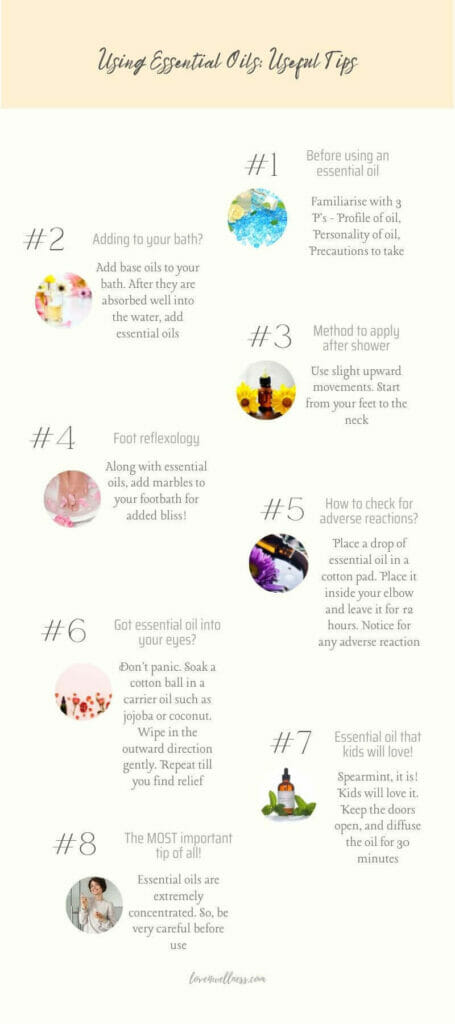
Do essential oils help with mental health or anxiety?
Yes, yes! Essential oils are wonderful allies to have if you experience anxiety and stress symptoms. Essential Oils affect the hypothalamus and limbic region of your brain, an area that deals with emotions, anger, hormones and more.
Want to know my Top 6 Anxiety treating oils? Here they are.
- Neroli
- Bergamot
- Orange
- Frankincense
- Rose Otto
- Sandalwood
TIP # However, any E.O that makes you feel good is going to help you. Because if you feel good, you will send your brain a positive message, and it will release serotonin or dopamine, which will help relieve anxiety and mental health issues.
- You Might Also Like: Do You Know The Common Mental Health Problems A Child Might Have?
Are essential oils for everyone?
Yes, please.
My mission is for everyone to,
- experience an aromatic lifestyle to reduce the toxins in their homes and body products they put on their skin
- empower you to take control of your health by having aromatic baths and or nourishing your body daily with a body boost blend
- create aromatic environments using ionisers
- create an ambience for sleeping, entertaining or when feeling sick
Aromatherapy is a wonderful modality to support you through life, its cycles and different stages, including ups and downs, highs and lows, peaks and valleys.
They are my personal allies, my companions, and I’m forever learning more about them. In fact, they are like friends, each with a different personality to get to know and understand 🙂
Specifically, are essential oils safe for kids?
Yes, with caution.
Dilution:
A thing to remember when you use Essential Oils in children is the dilution ratio. Besides, the ratio changes with age group and is suggested by IFA (International Federation of Aromatherapists) guidelines.
For ages 1-2 years: 1 -2 drops for every 10 ml.
For ages 5 – 10 years: 2 -4 drops per every 10 ml.
Restricted oils:
Also, please note that certain oils are not for children!
Eucalyptus and Peppermint should be avoided on their face due to the cineole component of these oils because they may trigger convulsions in some and respiratory problems in others. Besides, hot oils such as Black Pepper, Thyme, and Oregano should be avoided for children.
Therapeutic E.O.s safe for use in kids:
Some popular therapeutic essential oils that are safe for kids from citrus and floral group are:
- Mandarin
- Neroli
- Chamomile Roman
- Lavender
- Orange
- Vanilla
- Cinnamon
- Rose
- Geranium
#TIP:
Spearmint for kids: They’ll love it. There are always options in the Essential Oil world as there are approximately 200 different oils to choose from. Also, please note, if you are diffusing in their room, I suggest keeping the door open and reducing added drops.
Are they safe for pregnant women?
Again, use with caution. A heavier dilution of around 1-1.5 % is safe.
Aromatherapy is a wonderful and therapeutic modality to use during pregnancy to assist with many conditions and symptoms that some women experience, including the following:
- bloating
- fluid retention
- achy feet and back
- stretch marks
- nausea
- fatigue
- mood changes
- hormonal skin conditions
However, I recommend avoiding the use of Essential Oils in the First Trimester. In the second and third trimesters, you can resume using Essential Oils. Diffusing is a wonderful way to experience them while pregnant.
Safe Essential Oils For Pregnancy
- Neroli
- Sweet Orange
- Petitgrain
- Bergamot
- Grapefruit
- Lime
- Carrot Seed
- Patchouli
- Spearmint
Oils to be avoided
However, certain Essential Oils are to be avoided during pregnancy, including Aniseed, Basil, Camphor, Clary Sage, Mugwort, and Oakmoss.
Some essential oil recipes
Listed down are a few of my favourite recipes. Use them after you educate yourself adequately, either from an aromatherapist or self-learning.
INSOMNIA/ Sleep Easy
Diffuse the following an hour before you go to bed:
- Bergamot 3 drops
- Roman Chamomile 2 drops
- Lavender 1 drop
ANXIETY / I am free
Add The following to a tablespoon of Jojoba. Then rub onto your stomach in a slow circular motion and do 5 deep- slow – long Buddha Belly breaths.
- Bergamot 4 drops
- Neroli 3 drops
- Frankincense 2 drops
ENERGY / I am vital
Diffuse next to your desk the following :
- Peppermint 2 drops
- Rosemary 3 drops
- Lemon 3 drops
DETOX / I am pure
Add the following to 30mls/1 oz of base oil, e.g. Almond Oil and massage your body after the morning shower.
- Grapefruit Pink 6 drops
- Juniper 4 drops
- Cypress 3 drops
- Vetiver 2 drop
COLDS /FLU / Breathe
Add the following to a diffuser and keep it near you. Or add to 30 mls/1 oz to base oil and massage your chest and neck, reapply as often as needed.
- Lemon 4 drops
- Eucalyptus 3 drops
- Sandalwood 2 drops
- Peppermint 1 drop
PMT / I am love
Add the following to 30ml/1 oz of base oil, e.g. Rose and massage around your hip
- Rose 3% 8 drops
- Orange 6 drops
- Ylang Ylang 3 drops
To conclude,
The hugely growing market of Aromatherapy is promising in delivering immense health benefits. The use of essential oils improves physical, mental, and emotional wellbeing, and hence educating yourself to obtain the therapeutic effects would be great. Moreover, with bouts of stress day in and day out, embracing Aromatherapy is only wise.
Simmi, the author of this guide to Aromatherapy, is a leading aromatherapist based in Australia and conducts various online courses with the intention of spreading wellness across the world.
If you want to learn more about Essential Oils from Simmi, please click on the link and add your name to the waiting list so you can be the first to know when she launches ‘The Art & Science Of Essential Oils’.
http://thearomatherapist.com.au/the-art-science-of-essential-oils-course/
Edited by love4wellness | Images: canva.com
